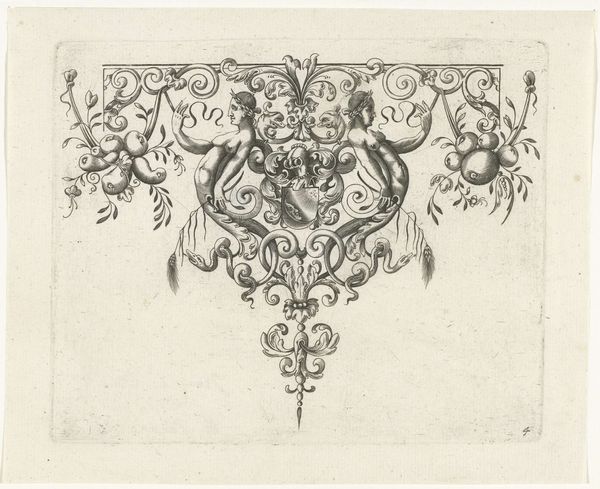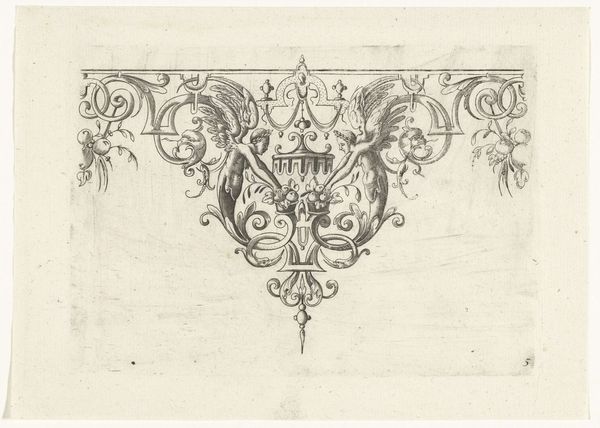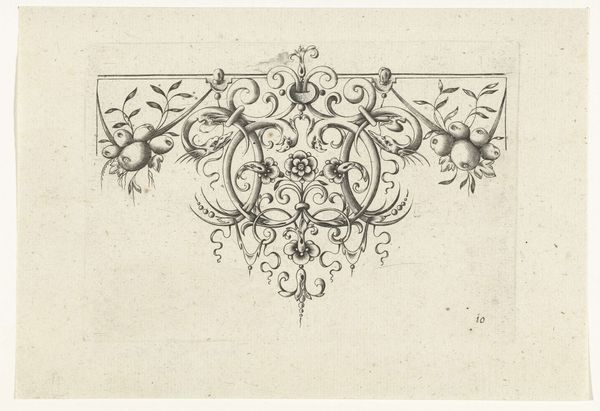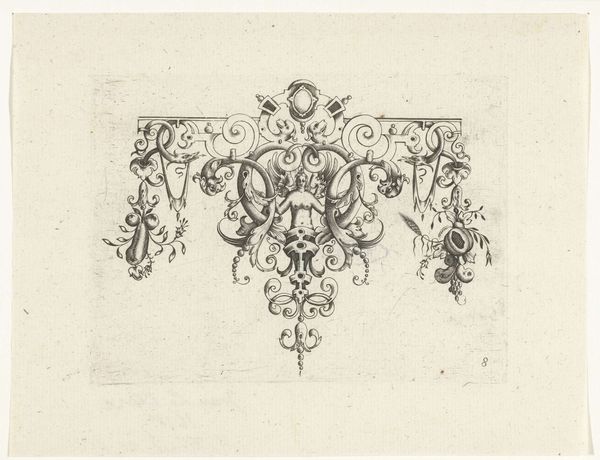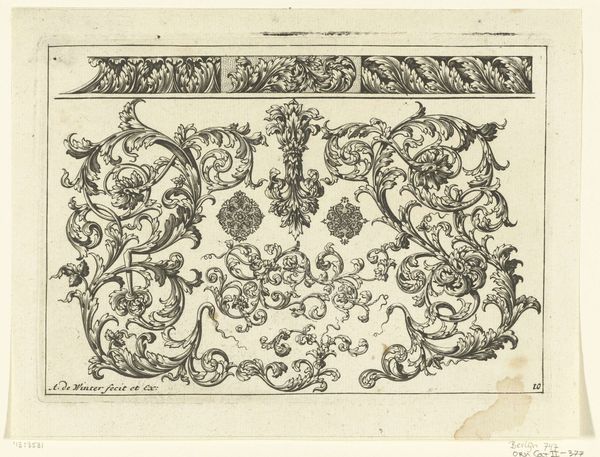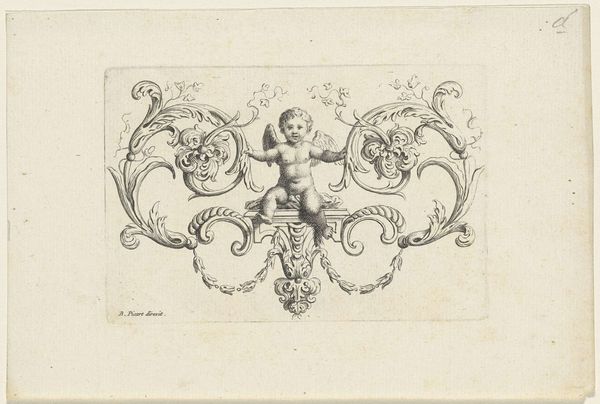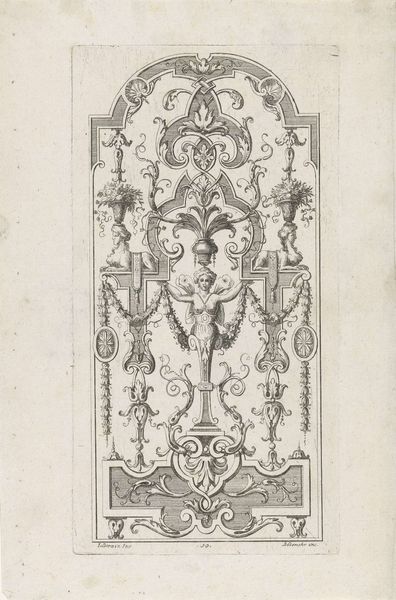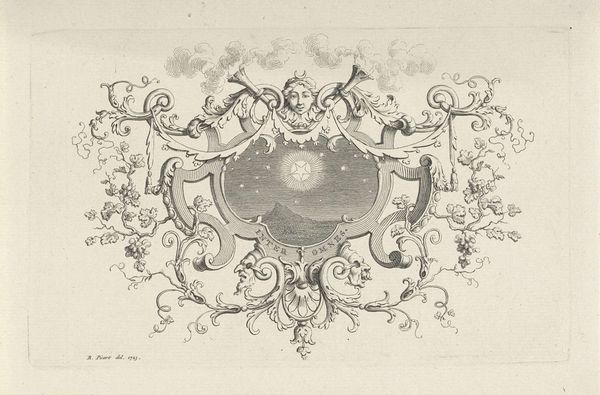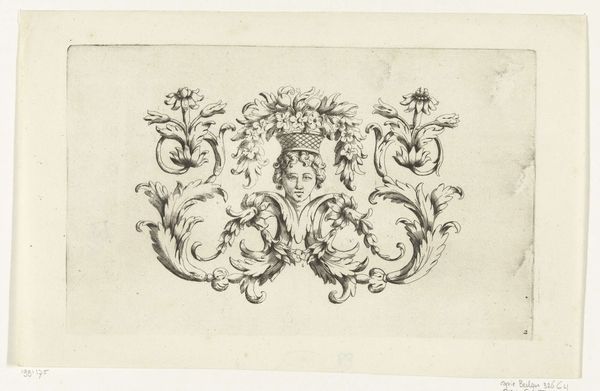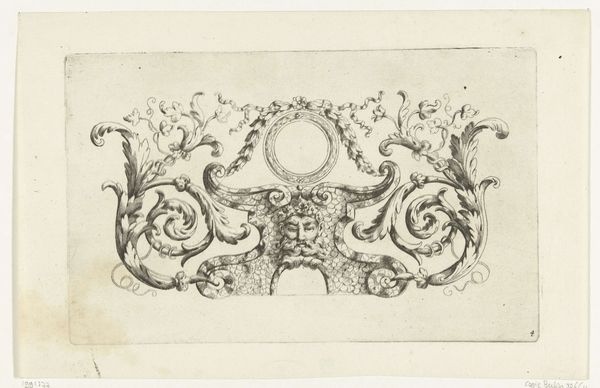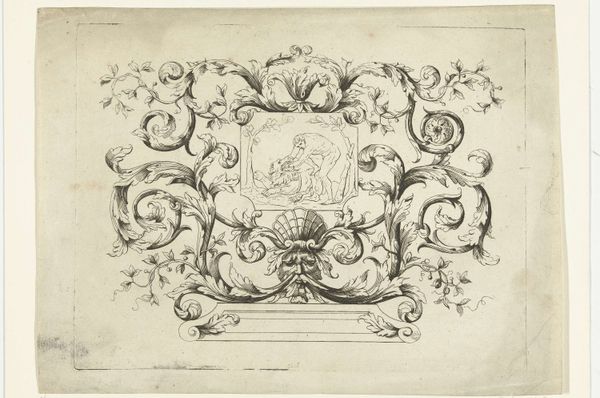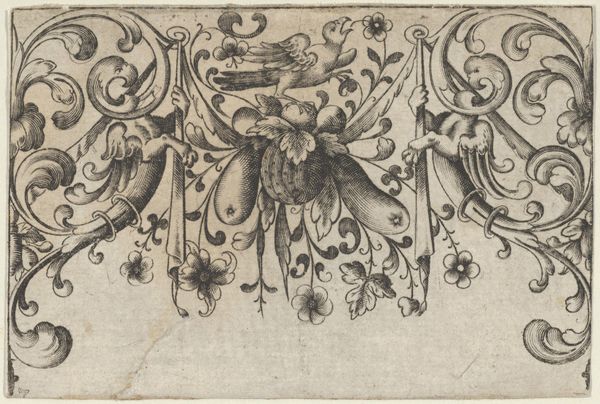
ornament, print, engraving
#
ornament
#
baroque
# print
#
old engraving style
#
figuration
#
line
#
engraving
Dimensions: height 123 mm, width 163 mm
Copyright: Rijks Museum: Open Domain
Curator: Editor: So, we’re looking at "Randornament met twee putti op zeepaarden," an engraving by H. Picart from 1618. It has a playful quality, but the dense, symmetrical design also feels quite formal. What strikes you about it? Curator: I'm interested in the materiality of this piece as an ornament. It's an engraving, which inherently links it to reproduction and dissemination. How would its use in its original social context shaped its meaning and value? Were these prints aimed at a particular clientele? Editor: That’s fascinating. So, you're suggesting its value lies not just in the image itself, but also in its function as a readily available item, almost like a mass-produced good. Would you say this challenges our traditional view of "art" as unique and precious? Curator: Precisely. This was not conceived as a unique artwork to be displayed. Instead, how does the medium — the relatively inexpensive, easily reproducible print — affect the status and use of the image? Were these designs intended for craftspeople to adapt, or for individuals to collect and display, and how do we investigate the labor and workshop that would create the matrix? Editor: I see. It moves beyond just admiring the aesthetic. I suppose looking at it this way shifts my understanding from focusing solely on its beauty, towards appreciating it as a product of its time, reflecting the methods of artistic creation and circulation. It almost democratizes art in a way, doesn't it? Curator: Indeed. The piece itself becomes a point of entry for investigating artistic creation beyond the cult of the artist genius. What materials did the printmaker use and how were they distributed? Editor: I never thought about art quite that way before. Thank you! Curator: My pleasure! I learned something too. It goes to show that everything we think is central to a piece – subject, style - stems from a social purpose of the material object, as we see from the historical evidence.
Comments
No comments
Be the first to comment and join the conversation on the ultimate creative platform.
